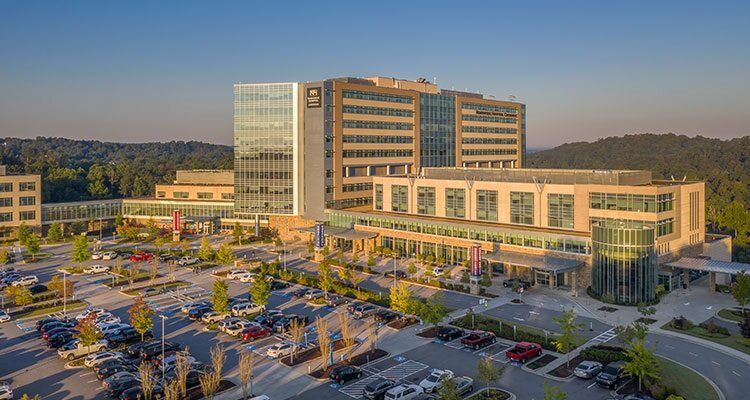
How Northside Hospital is improving its supply chain visibility to increase operational resiliency
Northside Hospital (Northside) is an integrated health care delivery system that serves the Atlanta region. It operates five acute-care hospitals with 1852 licensed beds and more than 250 outpatient locations across the state of Georgia.
Northside is one of the most respected and fastest-growing health care organizations in the Southeast and is committed to balancing clinical excellence with compassionate care. The health system leads the US in newborn deliveries and is among the state’s top providers of cancer care, sports medicine, cardiovascular and surgical services.
“Supply chains in most industries have faced varying degrees of disruption because of raw material and labor shortages, inflation, cyber threats, and geopolitical unrest among others,” says Carl Waller, Northside Hospital’s System Vice President, Supply Chain Management. “The pandemic both magnified and exacerbated those factors. In many cases, stock outs of critical products, delayed shipments, and substantial increases in the cost of supplies and capital have become the rule and not the exception. These pain points highlight the fragility of the supply chain and a recognition that there are operational blind spots that prevent optimal performance. This is especially true for healthcare given the direct impact of the pandemic on supply availability and cost of goods. Although Northside weathered the storm well, the pandemic experience was the catalyst for several initiatives geared towards minimizing the impact of disruption and improving performance. In other words, disrupting the disruption.
Closing the gap
“Prior to the pandemic, Northside measured adjusted fill rates from its distributors against a KPI target. The adjusted fill rate ignores the impact of manufacturer back orders and reflects only the distributor’s fill rate performance, while raw fill rate is unadjusted. Historically the difference between raw and adjusted fill rates was negligible. During the pandemic, however, back orders increased dramatically due primarily to raw material and labor shortages. As a result, the gap between adjusted and raw fill rate grew, which created a blind spot that limited Northside’s ability to react quickly to back order surprises. To close the gap, Northside partnered with its acute distribution partner to develop a robust process to reduce back orders by proactively identifying at risk products well ahead of projected stock-outs and developing a catalog of substitutes for those items. This meant performing deep dives into product specifications to find first, second, and sometimes a third substitute for at risk products since there was no guarantee that substitutes would not go on back order as well. Northside also dramatically increased the frequency of communications with key vendors and conducted ongoing usage reviews to predict future order patterns. Implementation of the new process resulted in an 81 percent improvement towards the fill rate target and performance has rebounded to pre-pandemic levels.
Category management clarity
“Optimizing product mix and cost became increasingly difficult during the pandemic due to supply chain disruption. With a constantly changing product portfolio, Northside implemented an approach to manage supplies at a more granular level using a category management methodology similar to that found in the retail industry. Products were segmented into pre-defined categories based on common attributes such as end use, customer and supplier groupings. Northside utilizes a standard hierarchy of over 70 major categories to gain visibility into spend patterns, vendor performance and clinical preferences. Category analysis, which includes external and internal benchmarking, is the basis for the development of specific strategies aimed at optimizing individual category performance through the identification of opportunities for standardization, spend reduction, supplier optimization and risk mitigation. Opportunities are prioritized based on impact and feasibility and assigned to team members for implementation.
 Increasing supply chain visibility
Increasing supply chain visibility
“Due to supply disruptions caused by the pandemic, many hospital systems increased inventory to mitigate the impact of back orders, manufacturer allocations and lengthening lead times. The push to build inventory often causes space constraints, reduces cash flow, and increases the risk of waste and obsolescence. The more inventory on-hand, the harder it is to manage. To address these issues, Northside implemented software that integrates inventory optimization algorithms with supply dimensions and storage requirements to continuously optimize par levels and storage capacity based on usage and clinical preference.
“Northside is investing heavily in wireless technology to automate the management of supply inventories. For instance, inventory for cardiology catheterization supplies are housed in smart cabinets which utilize radio frequency identification (RFID) technology to track the movement of each item, use predictive analytics to auto-replenish stock, and ensure the correct charges are captured for supplies consumed on each procedure. In other clinical areas, Northside has deployed an inventory solution that uses precision scales to monitor and replenish supply inventory based on
real time data at the point of use.
“Northside has also automated the surgical implant process by rolling out an AI based application that combines both provider and supplier transactions into a single portal. The benefits are pricing transparency, mitigation of product recalls and expirations, contract compliance, elimination of paper-based processing, and reduction in purchasing resources required to manage the process.
“To increase utilization of physical assets, Northside is implementing a real time tracking system (RTLS) to track and manage moveable medical equipment such as IV pumps and beds. RTLS utilizes active and passive RFID tags to provide visibility into the location of each piece of equipment. Knowing where assets are located on a real-time basis will allow for optimal utilization and form the basis for right sizing the equipment fleet and reducing equipment rental expense. RTLS will also mitigate the risk of lost or stolen equipment as well as reduce the time and effort required to take periodic physical asset inventories.
“And finally, Northside’s Business Intelligence team is developing an application that measures supply spend by surgical case, service line, provider, and facility. Analytics generated by the application will provide valuable insights into inventory utilization, physician preferences, and procedural variations across the system.
Enhancing resiliency
“Removing blind spots by increasing visibility into supply chain transactions through process transformation, category management, analytics and automation is making Northside a more resilient organization. Resilience allows us to more quickly pivot resources to address disruptions while maintaining the operational integrity to ensure continuity of patient care. Northside expects to further expand supply chain analytics and automation by incorporating additional AI and block chain capabilities as they mature and become available.”